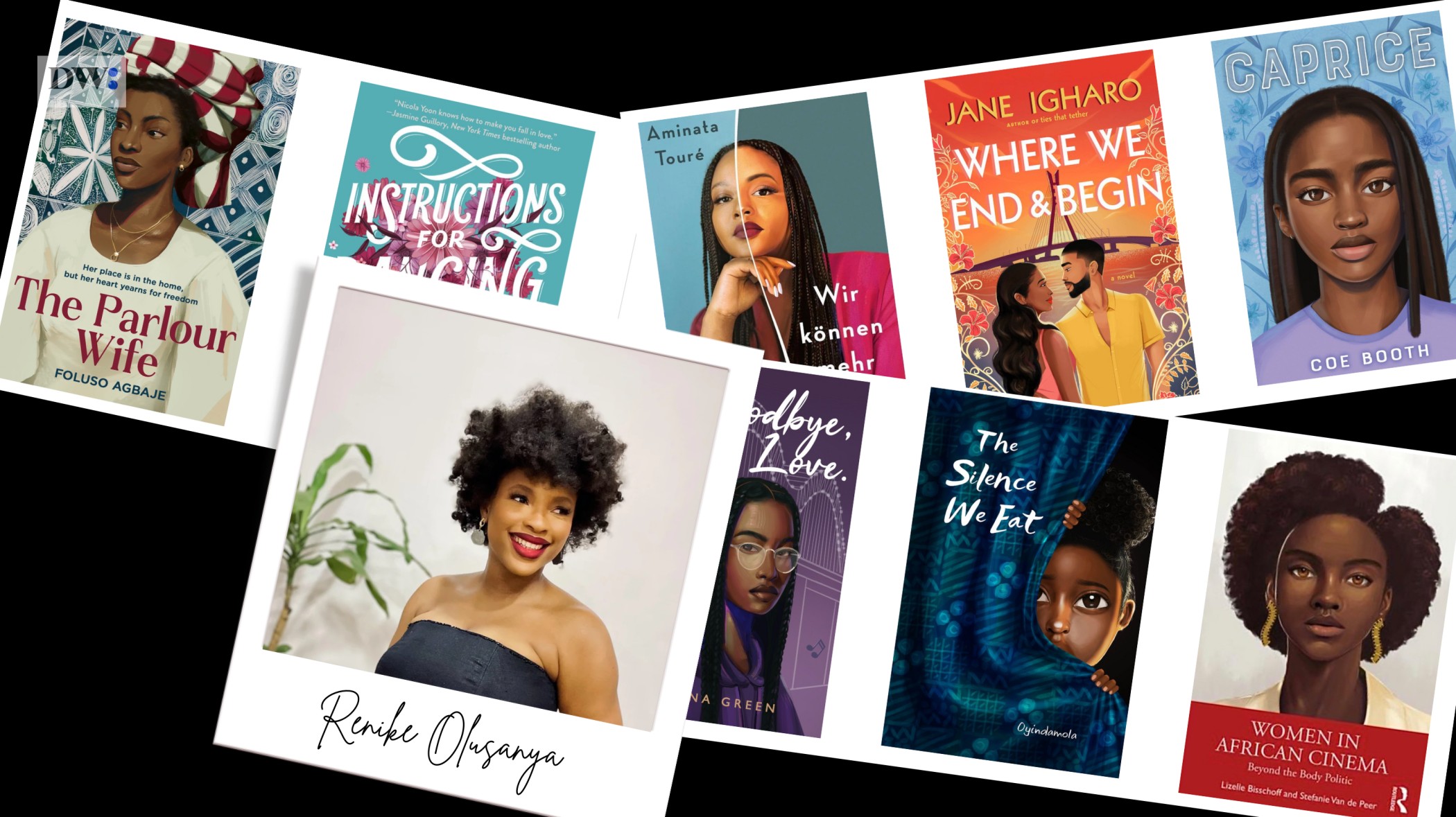The rise of digital design and consequently, digital art, has unlocked transformative potential for collaboration across the creative industry. From advertising to book publishing, digital art is increasingly influencing consumer preferences and market trends.
With the shift in the consumption of literature ushered in during the Pandemic, the literary and publishing industry has been pushed to adapt to these marketing trends and adopt a more creative approach to book cover designs, producing visually stunning and commercially appealing book covers.
Contrary to popular opinion, we all judge a book by its cover, it is a readers first point of contact to the story told within it, it only makes sense that it is treated as every bit of a selling point that it is.
After the cover reveal of Folusho Agbaje’s The Parlour Wife, illustrated and designed by Renike Olusanya, Document Women spoke to Renike about her artistic practice and how she has channelled it into creating some of the most visually striking book cover illustrations.

Renike Olusanya is a professional and award-winning visual artist and illustrator, and her cover illustration for The Parlour Wife is just one of many in that catalogue of her art. I have always come across her art, a prominent face in the Nigerian (digital) art scene, best known to me for its soft tones and clean finish, my first introduction to her book cover illustration was with Nicola Yoon’s Instructions For Dancing, at the time pieces from her Dance Series collection had become sort of a trademark for her artistic brand, it was an easy guess that she had illustrated the cover.
Some of her other works include Wir Können mehr sein by Amiata Touré, Where We End and Begin by Jane Igharo, Caprice by Coe Booth, Goodbye, Love by Briuana Green, Women In African Cinema: Beyond The Body Politic by Lizelle Bisscoff and Stefanie Van de Peer, Baby Biz is Outside by Debricka S. Taylor, Girls Can Dream by Jasmine Owens.

Her work has also been featured on numerous platforms, Vogue, GQ South Africa, Penguin Random House, Hulu, CNN Africa, Culture Custodian, and many more. Amongst others, her most recent award is winner of the 2023 Future Awards Africa Prize for Art & Literature.
She holds a Bachelor’s Degree in Visual Art(Graphic Design) and was fully introduced to digital design and art during her industrial attachment at an advertising agency in her third year at Uni.
“My supervisor at the time used to let me use his tab to practice and I would tinker with all these graphic tools and stuff. Being in the Visual Arts Department, they taught us everything in the first two years and then we would have to specialise in the third year so that was like a direction in the path I wanted to go” Renike, speaking to Document Women on the start of her digital art journey.
“My first ever cover Illustration was for Oyindamola’s The Silence We Eat. It is a poetry collection that essentially lent a voice to women’s struggle. For the cover, I went through the book and found a poem that stuck with me and made the cover around it. I found the entire process really interesting, merging art with storytelling was truly an honour and after then, the opportunities to do more of that just kept coming”
What does the creative process look like?
“Well, it’s usually me trying to understand the main character of the story or the general premise of the story and then create an illustration that works with it. Additionally, when I’m contacted by the publishers or authors, I usually ask for a brief, this would typically contain what they want the book cover to look like, I marry both understandings and make the first sketch which I then send to them for corrections or approval, once that is sorted, I then make a colour draft, with the colour draft I make a couple with different colour schemes for them to chose from, when that is sorted I then make the final illustration which eventually becomes the book cover.”
The cover for “Instructions For Dancing” is a favourite, what was creating that like?
“I absolutely enjoyed creating that. The author is the writer of one of my favourite books Everything, Everything, so when the agency reached out to me asking if I’d like to create the cover for her new book, I was stoked, it was a very easy yes. The entire process was very seamless too, they told me what they wanted and I had to give them my very best because this was an author I loved. It was a really exciting and easy project.”
What’s the most important part of illustrating book covers?
“Storytelling is very important. When you get a book, your first contact with the book is very important and that’s essentially the cover. We all judge books by their cover and it’s important that people can hint what the story is about from the book cover. It’s very important for me to find a way to tell the entire story in a simple illustration, if it doesn’t align, I scrap it”
What’s one major thing you would credit for how far you’ve come?
“I think I’d say being consistent. Generally, as a creative being consistent and constantly putting your work out there will go a very long way for your practice. Consistency helps you get better at what you do, especially when you don’t limit yourself to one form of expression, and putting yourself and your work out there is what creates room for the opportunities to come.”

Leave a Reply